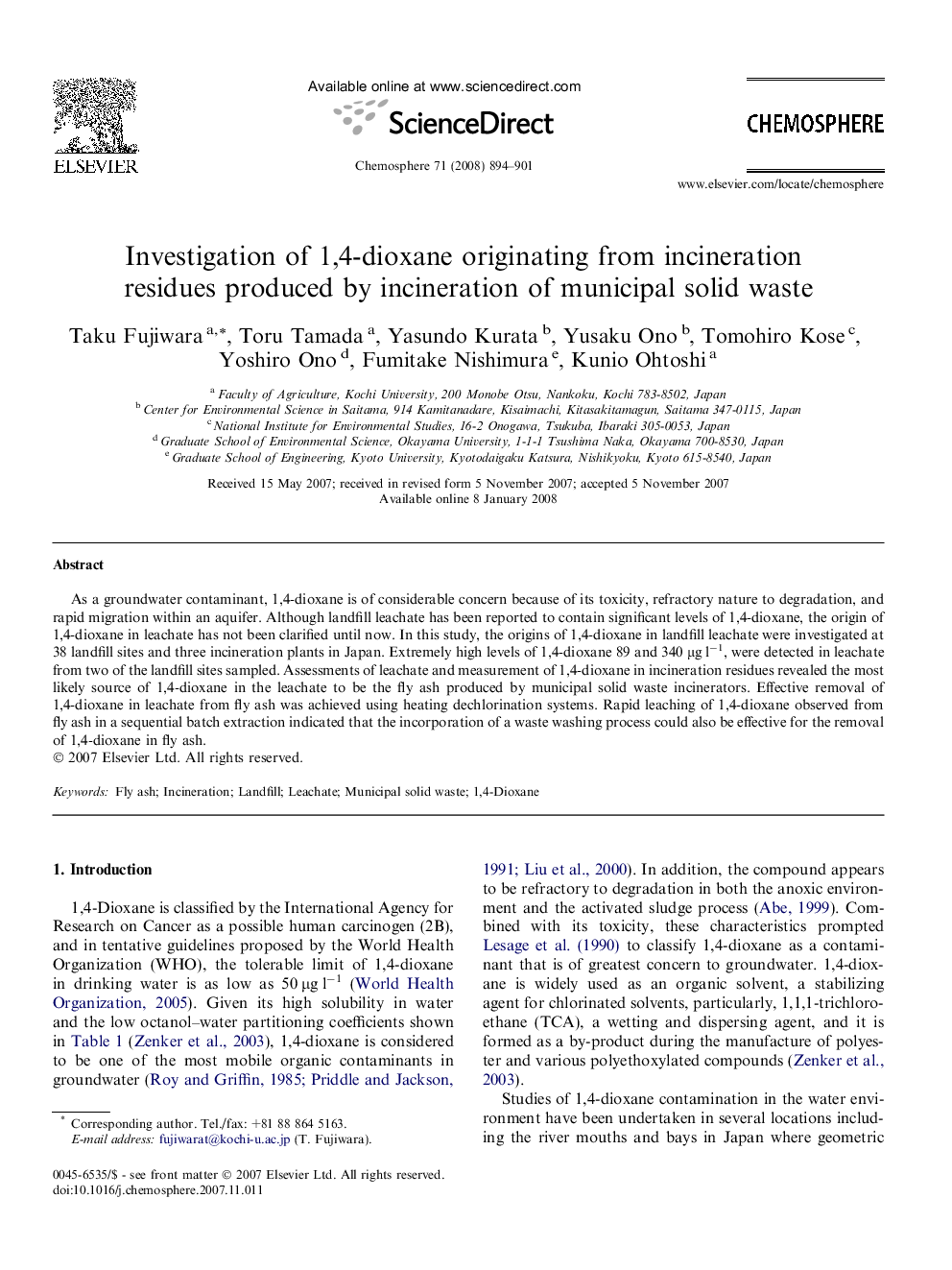| Article ID | Journal | Published Year | Pages | File Type |
|---|---|---|---|---|
| 4414629 | Chemosphere | 2008 | 8 Pages |
Abstract
As a groundwater contaminant, 1,4-dioxane is of considerable concern because of its toxicity, refractory nature to degradation, and rapid migration within an aquifer. Although landfill leachate has been reported to contain significant levels of 1,4-dioxane, the origin of 1,4-dioxane in leachate has not been clarified until now. In this study, the origins of 1,4-dioxane in landfill leachate were investigated at 38 landfill sites and three incineration plants in Japan. Extremely high levels of 1,4-dioxane 89 and 340 μg lâ1, were detected in leachate from two of the landfill sites sampled. Assessments of leachate and measurement of 1,4-dioxane in incineration residues revealed the most likely source of 1,4-dioxane in the leachate to be the fly ash produced by municipal solid waste incinerators. Effective removal of 1,4-dioxane in leachate from fly ash was achieved using heating dechlorination systems. Rapid leaching of 1,4-dioxane observed from fly ash in a sequential batch extraction indicated that the incorporation of a waste washing process could also be effective for the removal of 1,4-dioxane in fly ash.
Related Topics
Life Sciences
Environmental Science
Environmental Chemistry
Authors
Taku Fujiwara, Toru Tamada, Yasundo Kurata, Yusaku Ono, Tomohiro Kose, Yoshiro Ono, Fumitake Nishimura, Kunio Ohtoshi,
